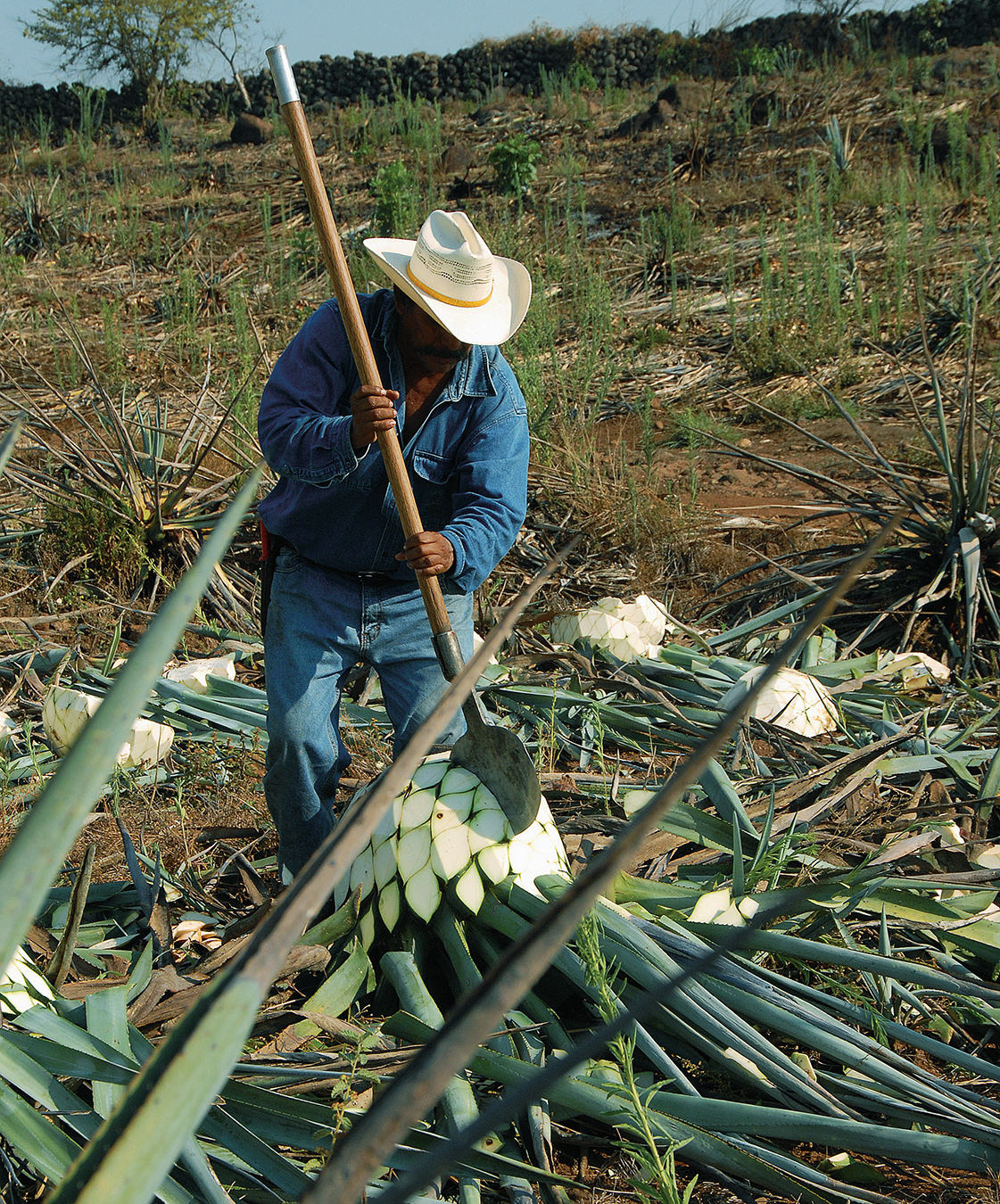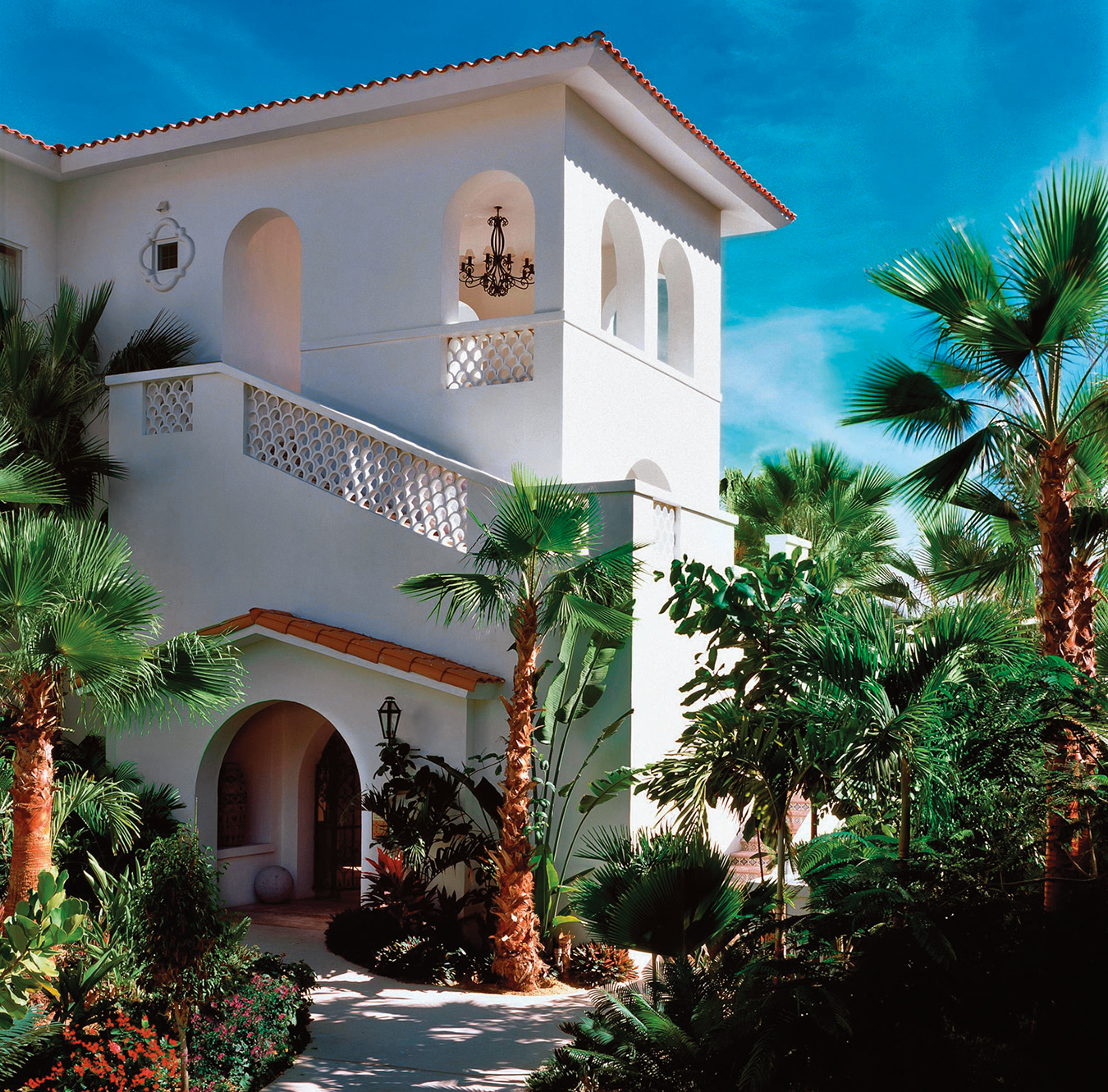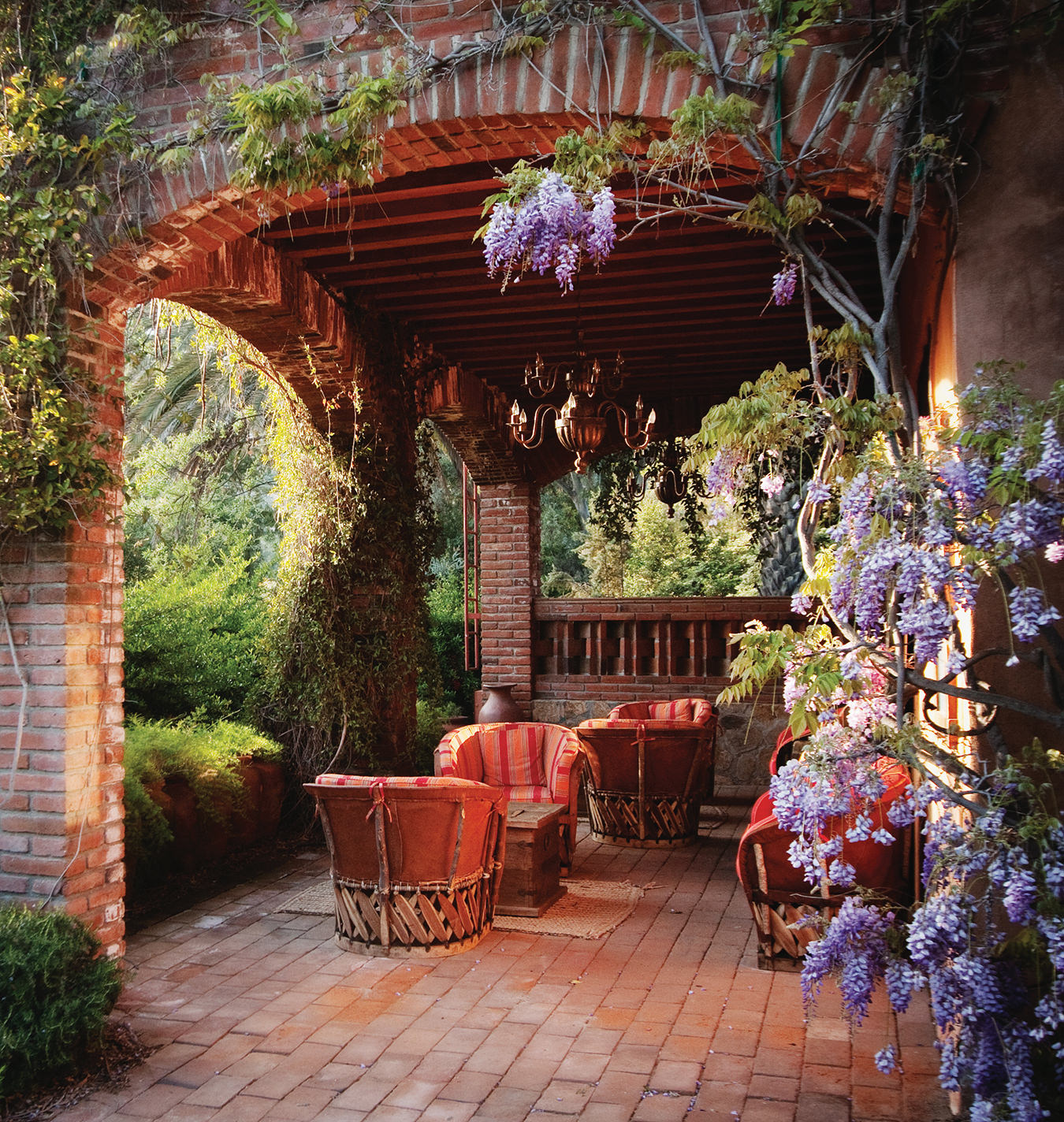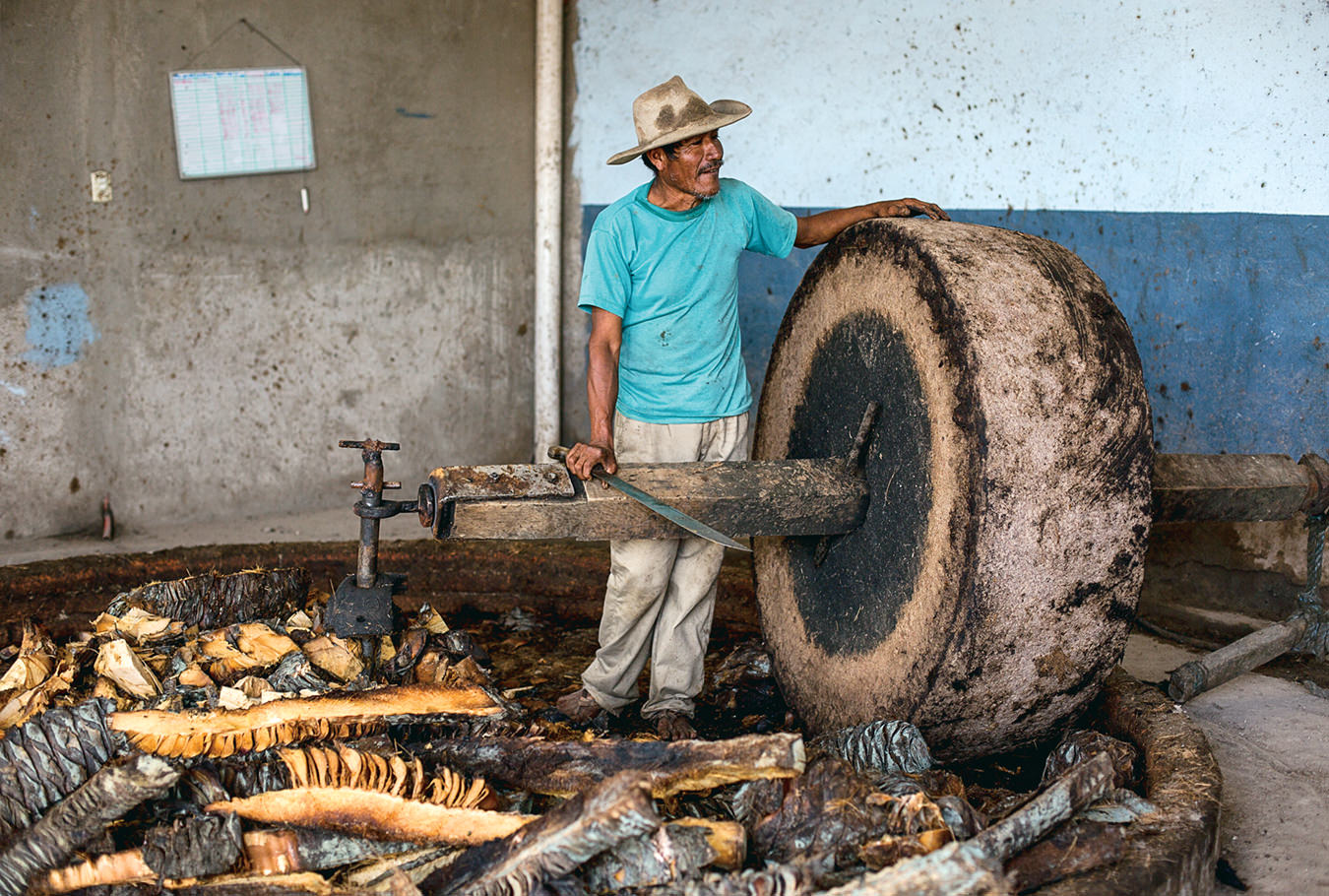A Weekend in Oaxaca City
Mezcal and mole.

Photo by Livia Hooson.
Mexico, a country rich in flavour and experimental at times, has become renowned for its culinary contributions, from Mexico City’s top-tier tasting menus to the succulent street food in Oaxaca City.
The high-altitude, desert-meets-mountains metropolis sits in the central valley of the state of Oaxaca at the foothills of the Sierra Madre mountains. The sprawling oasis, with a population of just over a half-million in the greater metro area, is surrounded by fields of the region’s iconic agave plants and has a history as rich as the food. The area is known for the Zapotec civilization, which thrived in the precolonial period. The influence of the language, and legacies such as pottery and architecture, extend into the present, with a third of the Oaxaca state population speaking Indigenous languages. The culture is a striking composite of textiles, art, and spirituality, and Oaxaca has become a tourist mecca for its excellent weather and unbeatable food.
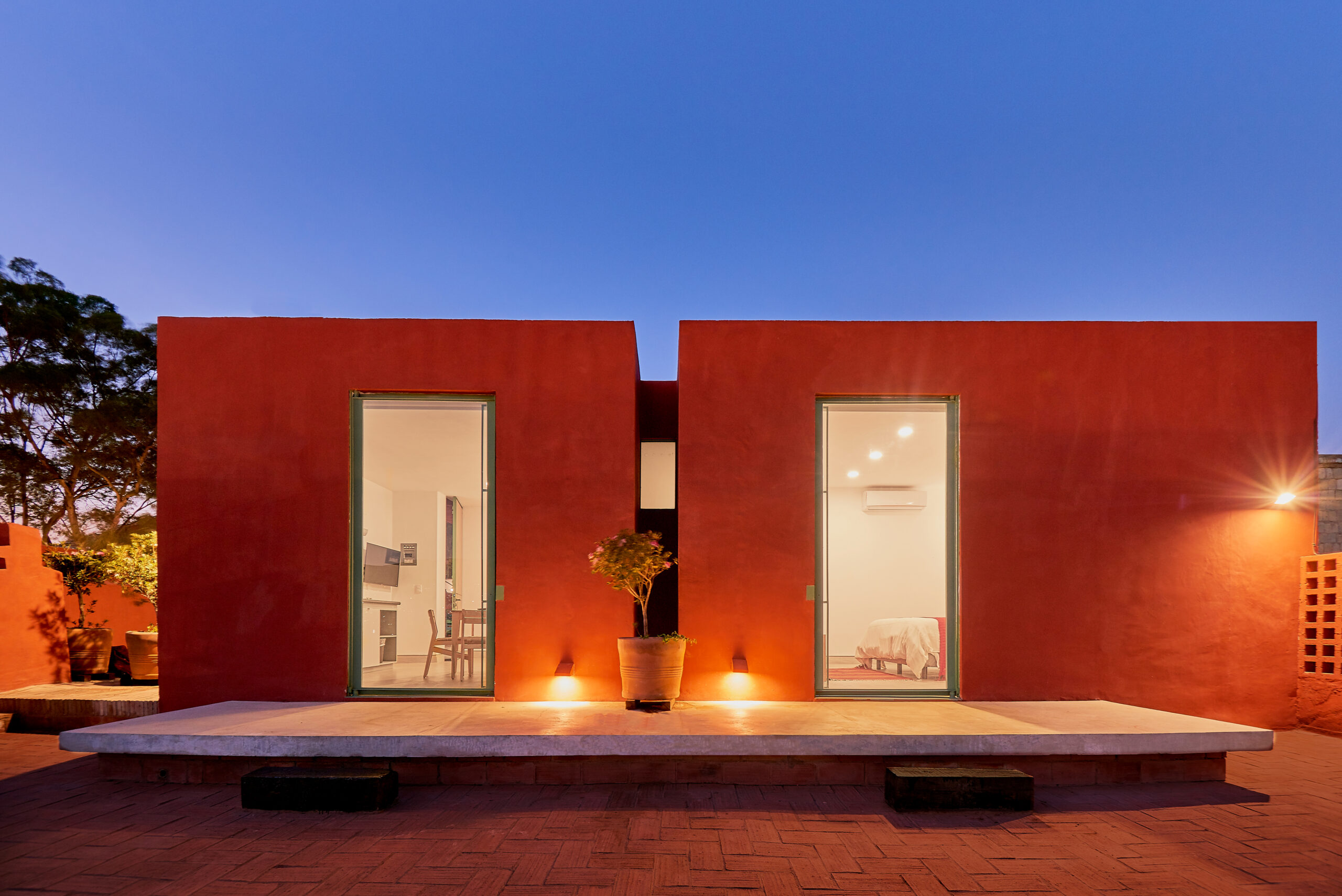
Photography via Casona Soledad.
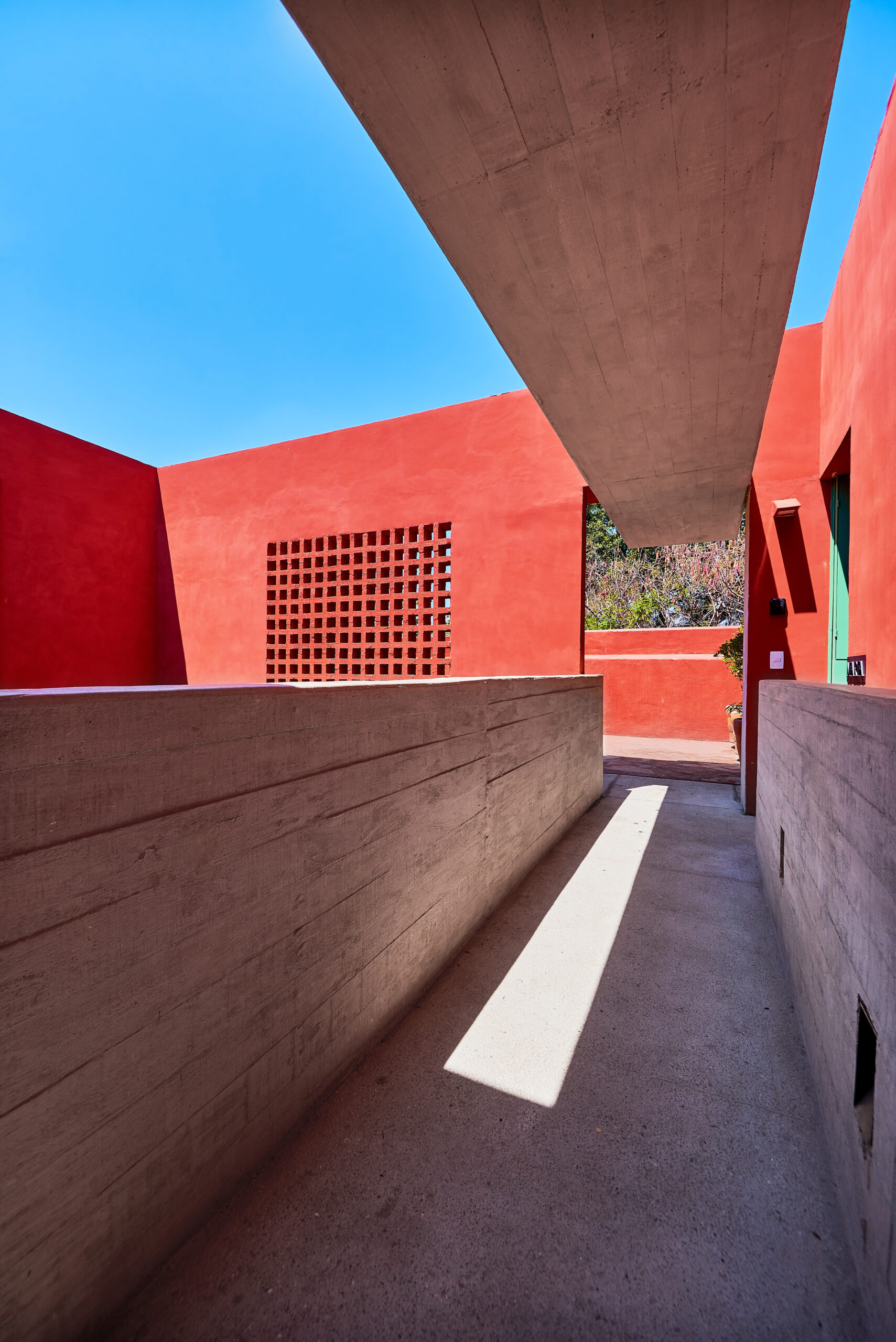
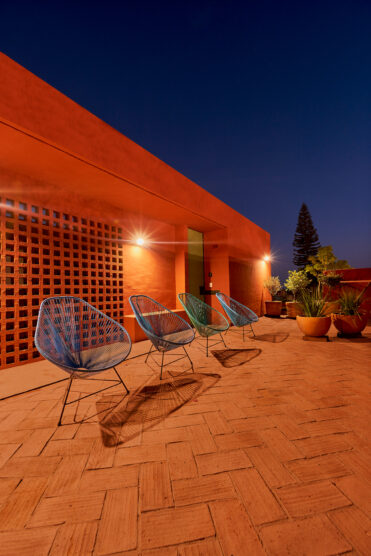
A wealth of boutique hotels have been created to accommodate visitors to the thriving heart of the city. Casona Soledad, perched among the historic colonial buildings in the city centre, is a modern hideaway with concrete walls drenched in coral and turquoise. Its seven apartments feature high ceilings, rain showers, and kitchens, and are furnished with plush sheets made by Oaxacan artisans. With private terraces connected by breezeways, the rooms open up to the wide desert skies and the sparkling city below. If you are looking to take a piece of the design-savvy hotel with you, its on-site tienda sells the tin lanterns, colourful rugs, clay figurines, and even locally made furniture seen in the rooms. The hotel is near mezcalerias, renowned street food, galleries, and workshops, including those producing the famous woodblock prints made by local visual artists.
Outside the city centre, there are plenty of charming neighbourhoods coalescing and coming into their own. Reforma, to the northeast, is known for a confluence of contemporary restaurants and cafés. Here you can check in to the boutique hotel Casa de Arte, which was born from the contemporary resurgence of artistic energies flowing through Oaxaca. the furniture and decor is all locally designed with an emphasis on sustainable, native woods. Each brightly lit apartment is named for a different type of tree, fit with large beds, hammocks, and with easy access to the pool terrace. Its on-site restaurant presents innovative cuisine with traditional Oaxacan ingredients such as corn, chili peppers, and cocoa beans.
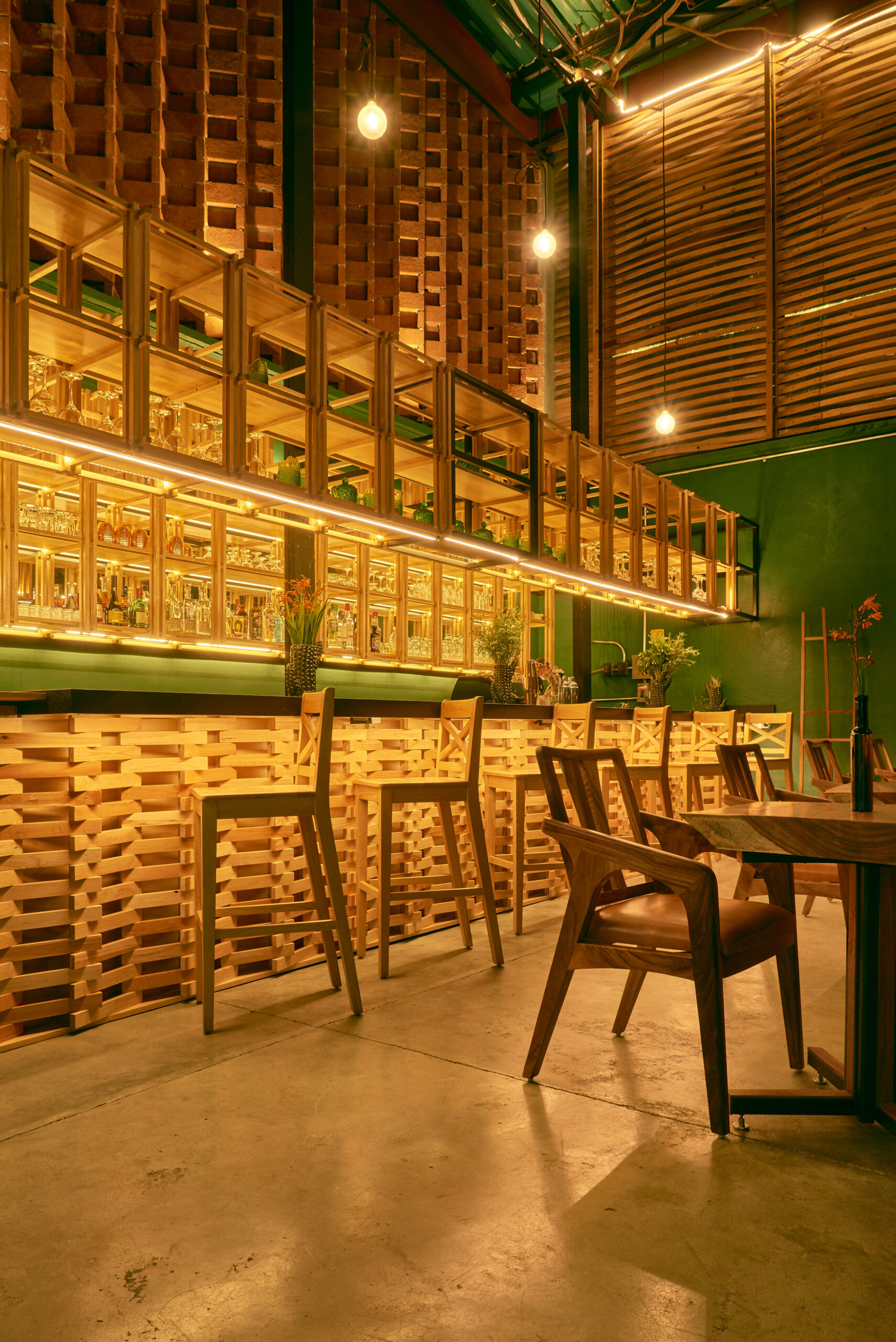

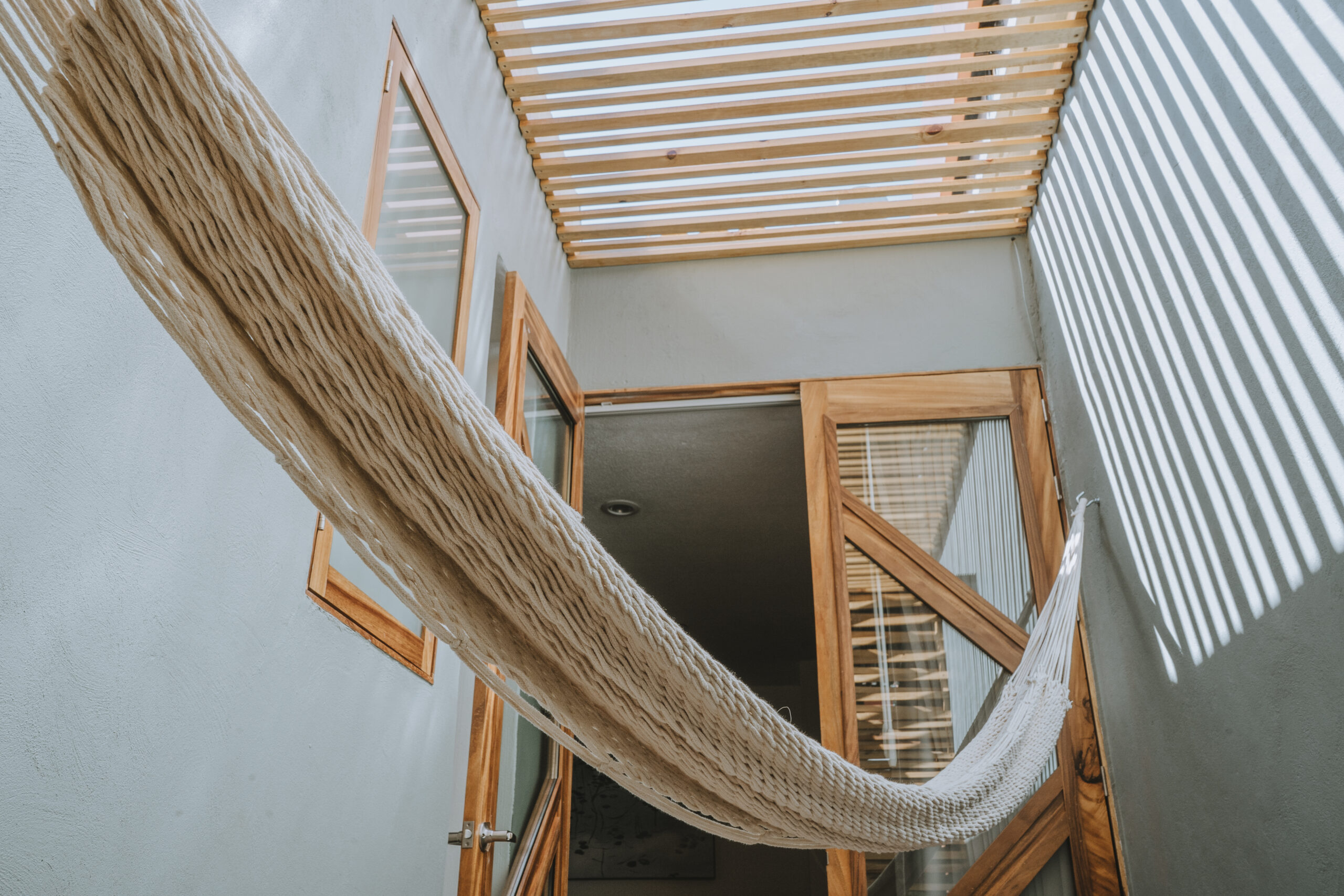
Photography via Casa de Arte.
The artistic hospitality is paralleled, if not exceeded, by the vibrant food scene, which visitors should dive into—mouth first. There are endless vernacular dishes in Oaxaca, including mole, which can be made with up to 30 different ingredients—the region has been nicknamed “the land of the seven moles.” Plenty of restaurants, both traditional and contemporary, will have mole on the menu as well as mole tastings. Get curious and try to decipher the differences between the yellow, red, green, chichilo, coloradito, and manchamentel to get a sense of the diversity in this one dish alone.
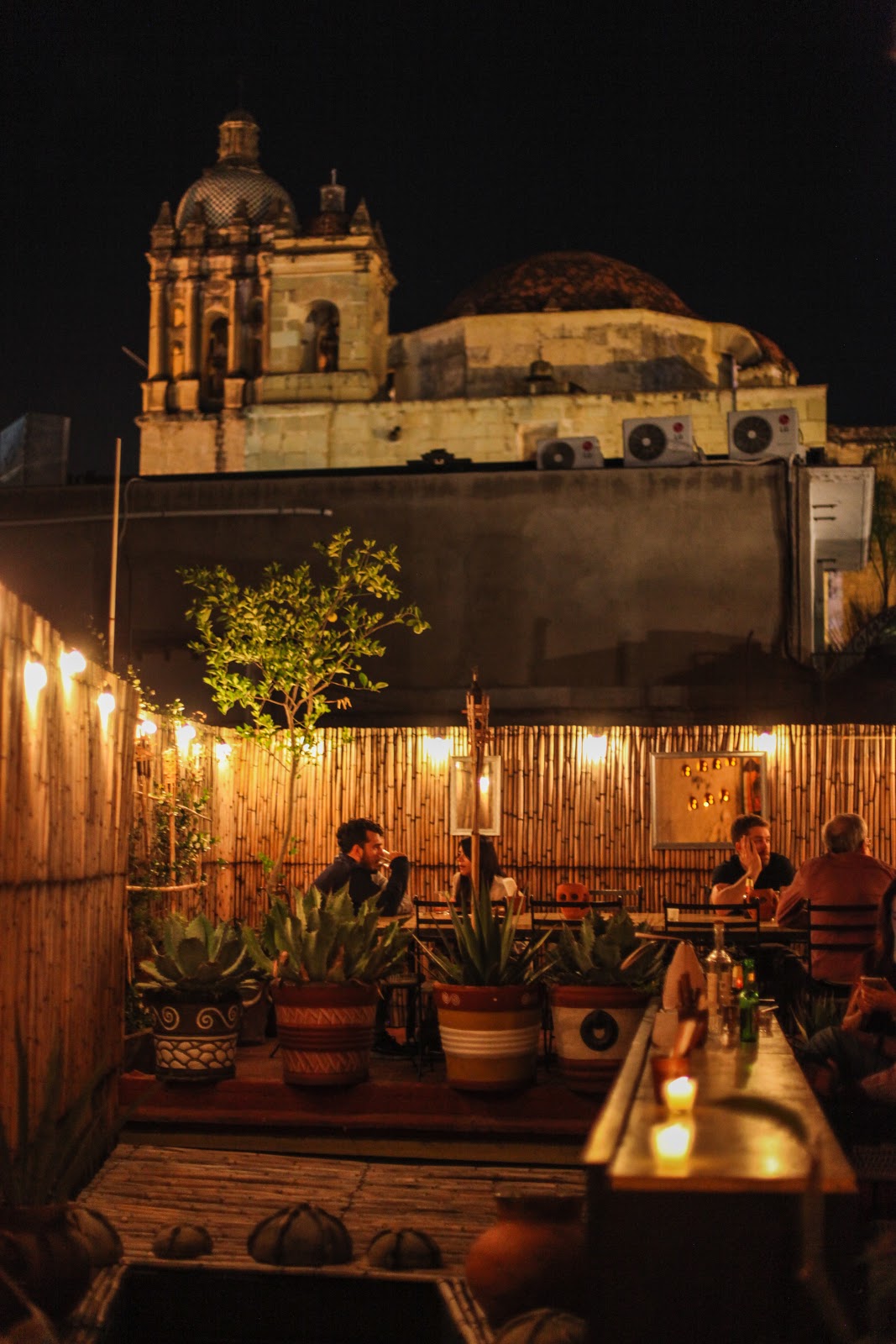
Open air dining at El Destilado.
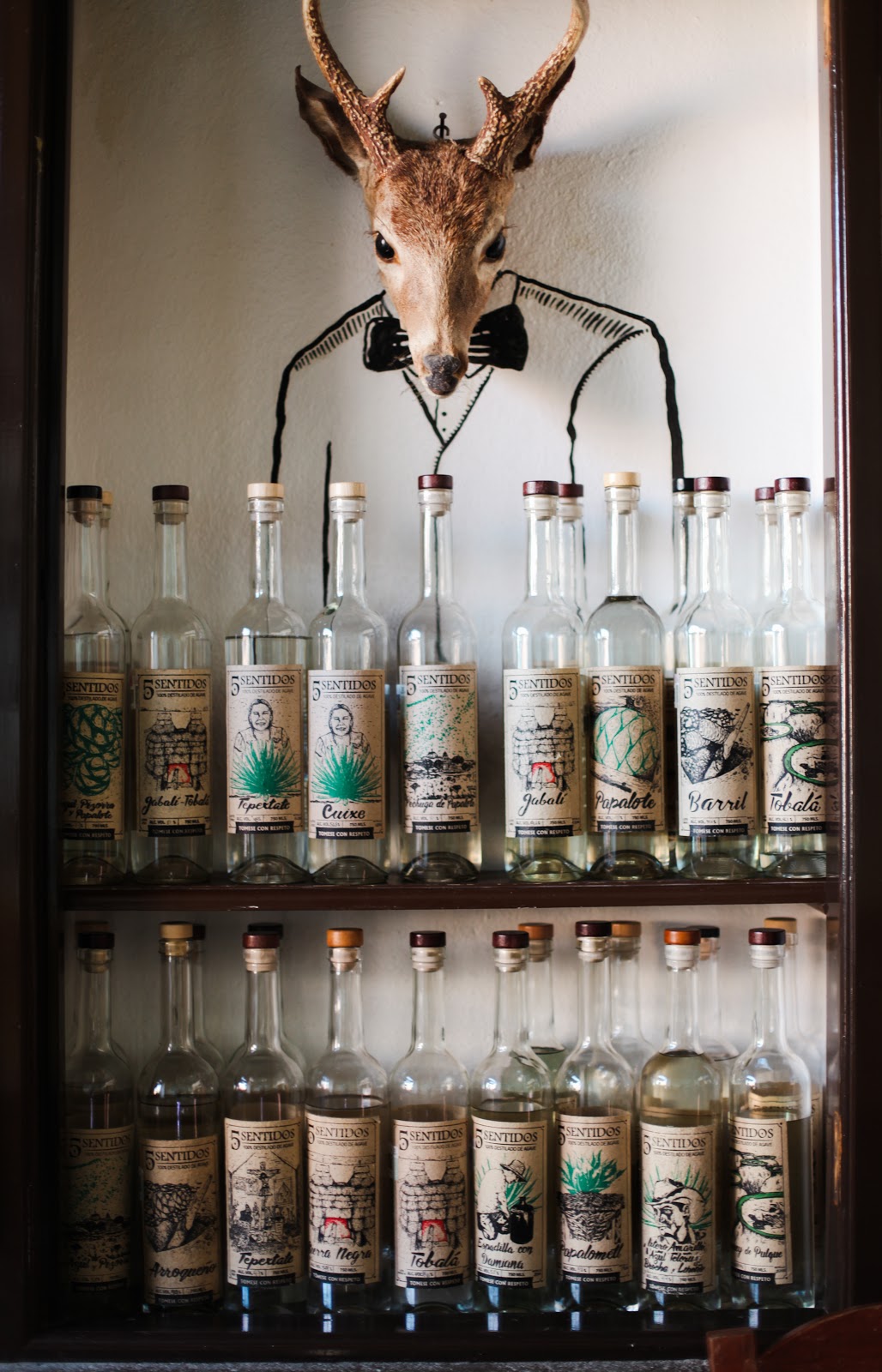
The mezcal collection at El Destilado.
Try the mole verde with grilled huachinango (red snapper) served at El Destilado for an upscale twist on traditional fare. The laid-back atmosphere at night is especially enticing with its candlelit, open-air dining space that reveals an abundance of clay sugar skulls (the ever-present motif for which the city is known internationally). Its experimental offerings include a 12-course chef’s menu that takes foodies through the culture’s most distinctive dishes with a gastronomic approach—served with custom cocktails, mezcal, cervezas, and even sake.

Varieties of mole; photo by Livia Hooson.
To eat the way most Oaxaqueños do, spend an afternoon at Mercado 20 de Noviembre that will captivate visitors itching to skip the five-star eateries. The bustling indoor market is flush with locals and visitors passing through endless stalls where plenty of handmade tacos, tlayudas (Mexican pizzas), and memelitas are ready to be served alongside steaming vats of frijoles and chorizo. Check out the popular chapulines (toasted grasshoppers) that add a crunchy bit of protein to your meal. And don’t miss the large balls of white quesillo (artisanal Oaxacan cheese) being strung and tossed by skillful hands, and yes, they are as much fun to eat as they are to watch being made.
It is said tequila wakes the living and mezcal wakes the dead. When in Oaxaca, it is essential to include a sipping experience of the smoky and potent spirit. Mezcal actually has a very different process and use of ingredients than tequila as it involves roasting the agave underground using one or more of the nearly 40 species native to Oaxaca, resulting in a spirit unlike any other. It is not hard to find a trendy mezcaleria throughout the city, but we recommend stopping in to the fan-favourite, La Mezcaloteca. Reservations are necessary to book a tasting at the dimly lit bar where its expert hosts guide you through the complexities of the mezcals, including how to properly smell, sip, and savour each unique blend. From the common espadín seen on most exported bottles to the more artisanal varieties like madre cuishe, there are endless flavours. Spicy, earthy, citrus, and smoky are just a few. Keep in mind that it is recommended to sip the mezcal simply on its own, but you will see it is common for visitors to try the sal de gusano (a spicy worm salt).
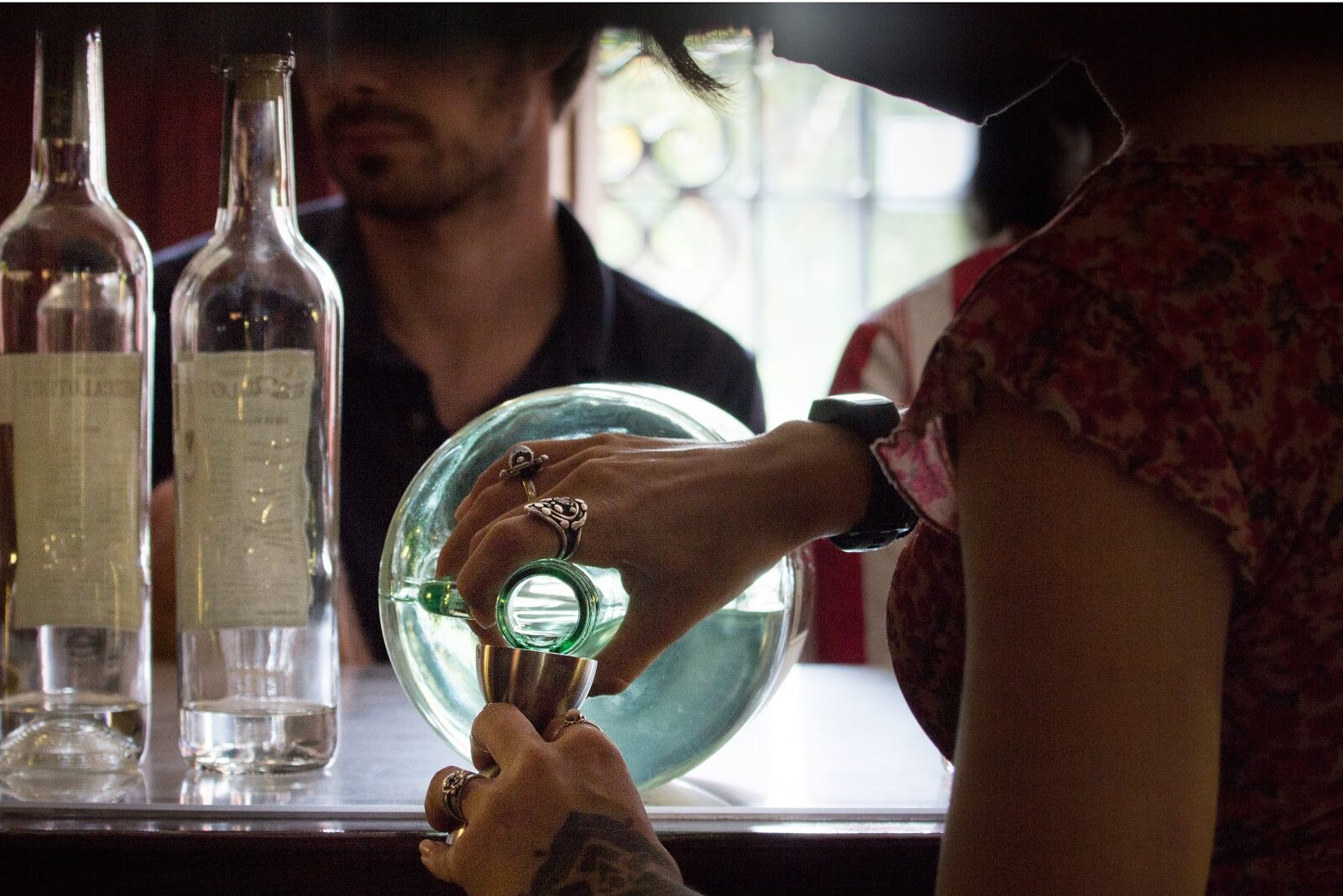
The beauty of mezcal at La Mezcaloteca.

Photo by Livia Hosoon.
Mezcal has become a cultural phenomenon in the state, and hundreds of families produce their own spirits as a means of income here. To understand the mezcal process, we recommend a tour led by Víctor J. from the travel company Oaxacacrew. Just an hour outside the city in the dusty foothills lie acres upon acres of agave farms, including Antonio Carlos Martínez’ property, where he is cultivating wild agave plants for his specialty mezcals. As the master mezcalero of Leeshu, Zapotec for rabbit, Martínez is deeply connected to the land his family has worked for generations. Visitors can learn the stories of the plants as told by Martínez and see the entire process from field to distillation that is all done by hand except for one piece of machinery. Finish the day off by planting your own agave in the ground, followed by a mezcal tasting as the sun sets against the terra cotta hills stamped with the blue-green spines of the agave.
Here in Oaxaca, there is so much to discover when the senses are piqued and one is willing to inquire.

